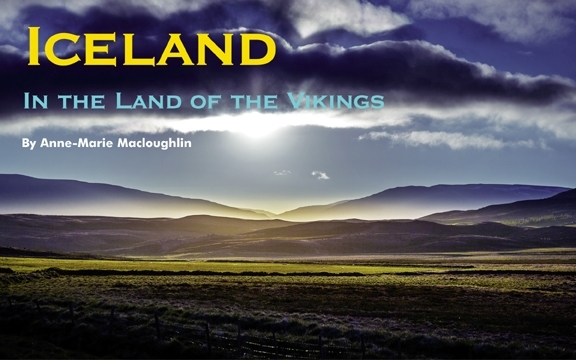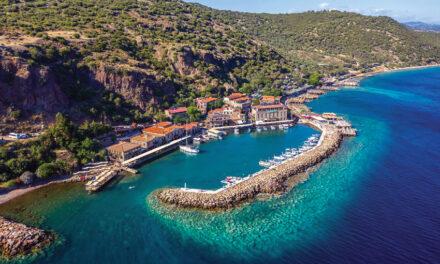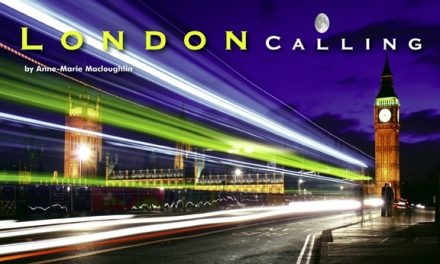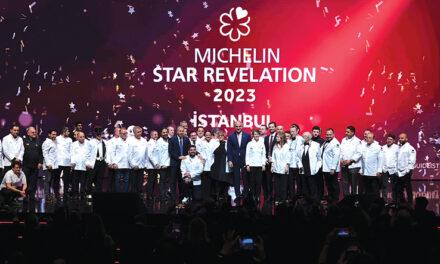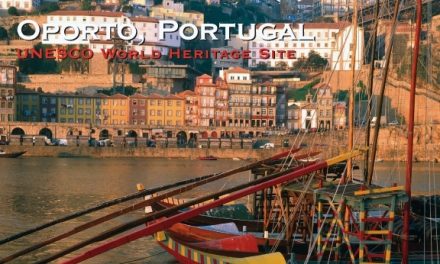Iceland
In the Land of the Vikings
Published in the Spring 2013 Issue of Canadian World Traveller
By Anne-Marie Macloughlin
 Waterfalls, Wilderness – and Eyjafjallajokul
Waterfalls, Wilderness – and Eyjafjallajokul
With a less than tropical climate and the eruption of Eyjafjallajokul in 2010, Iceland is not your typical destination. Still, there is something about it that is appealing in a Lord of the Rings way. Icelandair flights to many European cities make regular stop-overs in Reykjavik, my recent trip to Sweden providing the perfect opportunity to schedule a whirlwind detour to this mysterious island.
Climate
Average temperatures in Iceland rarely dip below freezing in winter, reaching 13- 15 degrees Celsius in summer . Most of the population is centred around Reykjavik, with spectacular scenery close by.The best way to see Iceland is by jeep. Volcano Tours (volcanotours.is), one of the many established tour companies on the island, specializes in not only volcanoes, but some of the most breath-taking scenery in the world.
The Viking Horse
At 8am, the jeep arrived, driven by Hlynur, our cheerful English-speaking guide. Shortly after departing the city, we saw tourists enjoying a horse-riding excursion. The Icelandic Horse is the purest in the world, and no other breed exists on the island. They are often referred to as ponies, due to their diminuitive size – and the lack of an Icelandic word meaning ‘pony’).
Legends and the Falls
Pointing out a distant peak, Hlynur informed us this was Eyjafjallajokul , pronounced aya-fa- yatta-yo-koot-l . Helpfully abbreviated by the media to E15, there have been no significant eruptions since 2010.
Iceland is also famous for its waterfalls . As a contrast to the drama of a belching volcano, we stopped at the 40 metre high Seljalandsfoss waterfall, near E15. Behind the falls lies a path; legend has it that this is a popular spot for a lady to propose marriage. If her paramour declines, then it’s a wet goodbye. Hlynur could have been joking, but it made for a good story.
Skogafoss Falls is a good 20 metres higher than Seljalandsfoss, with a 400-step hike to the top (Note: bring comfy shoes). From the summit I glimpsed Reynisdrangar , the black sand beach, and our next destination. Three tall stacks of basalt rock rise out of the sea; legend has it, they are the remnants of three trolls that tried to drag a ship ashore, then turned to stone as the sun came up. Observing the roiling surf, it was easy to see how such legends took flight.
The Gullfoss waterfall is actually two separate waterfalls originating from the Hvita River, visible only by standing right at the edge of its banks, and one of the famous stops on the Golden Circle, along with the original geysirs and the rift valley of Þingvellir.
Heading into Þingvellir National Park, we saw scrubby vegetation and a landscape more suited to an alien planet. This was ‘No-man’s Land’, where the tectonic plates shifted, separating North America and Eurasia. Iceland’s first national park, it remains an important part of the country’s heritage.
Letting off Steam
Next stop – the geysirs (to use the traditional spelling). From the Norse word geysa, meaning to gush or rush forth, the Great Geysir, which others were named after, has been dormant for decades. Little brother Strokkur, however, belches steam and boiling water approximately every five minutes, up to 100 feet in the air. The geyser park is fun to walk through, with its bubbling streams and multi-coloured mineral –rich paths. Remember – this IS boiling water we’re talking about, so no paddling.
A Furry Farewell
Heading back to Reykjavik, I mentioned that I’d wanted to see the horses, but wasn’t able to fit it into this trip. Spotting a nearby paddock, our wonderful guide pulled over, where several of these beauties trotted up to the fence, happy to see us. As an unusually friendly one nuzzled my shoulder, I made a promise to myself and my equine friends: to return to this magical place and ride off into the wilderness – Lord of the Rings style.

